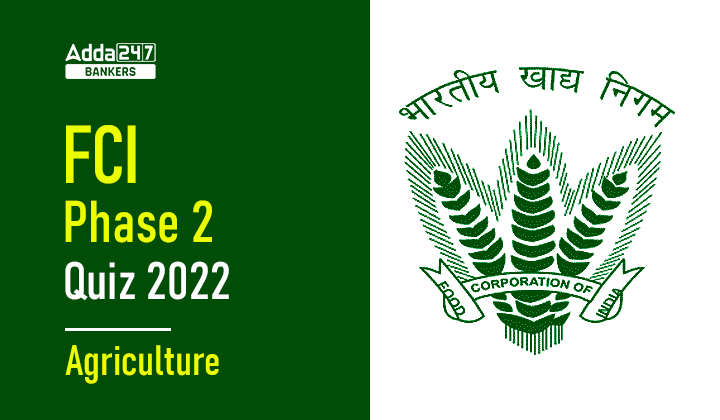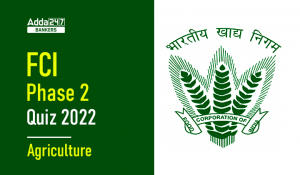Q1. Incorporation of biotechnology in agriculture is referred to as _________
(a) White revolution
(b) Blue revolution
(c) Green revolution
(d) Black revolution
Q2. Which of the following is a bio-fertilizer?
(a) Nostoc
(b) Azolla
(c) Rhizobium
(d) All of the above
Q3. A.M. Chakrabarty is famous for his contribution in developing ________ that degrade oils spills.
(a) Lactobacillus
(b) Pseudomonas
(c) Cholera
(d) Streptococcus
Q4. Which of the following are produced with the help of biotechnology?
(a) Alcohol
(b) Yoghurt
(c) Vaccines
(d) All of these
Q5. Small and extra circular DNA present in the bacterial cells is known as ________.
(a) Plasmids
(b) Vectors
(c) SSR
(d) DNA
Q6. Which of the following is used as edible vaccine?
(a) Transgenic potato
(b) BT Brinjal
(c) Golden rice
(d) None of these
Q7. Which of the following are the steps involved in tissue culture?
(a) Initiation
(b) Extension
(c) Ligation
(d) Glycation
Q8. Which of the following is the first cloned animal?
(a) Sheep
(b) Goat
(c) Cow
(d) All of these
Q9. Which of the following disease can be cured by genetic engineering?
(a) Jaundice
(b) Thalassemia
(c) Cholera
(d) Jaundice
Q10. Which of the following is the final step of tissue culture?
(a) Rooting
(b) Hardening
(c) Treatment
(d) Shooting
Solutions
S1. Ans (c)
Sol. Many new plant varieties being developed or grown by farmers have been produced using genetic engineering, which involves manipulating the plant’s genes through techniques of modern molecular biology often referred to as recombinant DNA technology. which referred as green revolutions.
S2. Ans (d)
Sol. Nostoc is blue-green algae that fixes atmospheric nitrogen into ammonia and the plants can use this ammonia for their living processes. Thus, nostoc acts as a free-living or symbiotic nitrogen-fixing bacteria for the plants and therefore, is used as a biofertilizer.
• Azolla is water fern which is also used as a biofertilizer. There are around 80,000 symbiotic cyanobacteria present on its leaves. Symbiotic cyanobacteria Anabaena Azollae is responsible for nitrogen-fixation which increases the fertility of the soil and in turn enhances the yield.
• Rhizobium biofertilizer, it is a biofertilizer that contains symbiotic Rhizobium bacteria which is the most important nitrogen-fixing organism. These organisms have the ability to drive atmospheric Nitrogen and provide it to plants.
S3. Ans (b)
Sol. In 1971, Prof. Chakrabarty got notable recognition for development of a genetically engineered Pseudomonas, “an oil eating bacteria” also known as “superbug”.
S4. Ans (d)
Sol. All above products are produced with the help of biotechnology.
S5. Ans (a)
Sol. A plasmid is a small, circular, double-stranded DNA molecule that is distinct from a cell’s chromosomal DNA. Plasmids naturally exist in bacterial cells, and they also occur in some eukaryotes. Often, the genes carried in plasmids provide bacteria with genetic advantages, such as antibiotic resistance.
S6. Ans (a)
Sol. A new form of vaccine was introduced which will have the power to mask the risk side of conventional vaccines. The main mechanism of action of edible vaccines is to activate the systemic and mucosal immunity responses against a foreign disease-causing organism. Edible vaccines can be produced by incorporating transgene in to the selected plant cell. At present edible vaccine are developed for veterinary and human use.
S7. Ans (a)
Sol. The stages of plant tissue culture are: selection/preparation (stage 0), initiation/establishment (stage 1), multiplication (stage 2), rooting (stage 3), and acclimatization/hardening (stage 4).
S8. Ans (a)
Sol. The first successfully cloned animal was named as Dolly (a sheep). Dolly was born on 5th July 1996 and was the first mammal to be cloned.
S9. Ans (b)
Sol. Adding a functional gene to defective blood stem cells is a successful therapy for patients with severe beta thalassemia, according to an international phase-3 clinical trial led by Ospedale Pediatrico Bambino Gesù in Rome, whose results have been published in the New England Journal of Medicine.
S10. Ans (b)
Sol. The stages of plant tissue culture are: selection/preparation (stage 0), initiation/establishment (stage 1), multiplication (stage 2), rooting (stage 3), and acclimatization/hardening (stage 4).


 Accounts Quizzes For FCI Phase 2 2023- 0...
Accounts Quizzes For FCI Phase 2 2023- 0...
 Agriculture Quizzes For FCI Phase 2 2022...
Agriculture Quizzes For FCI Phase 2 2022...



